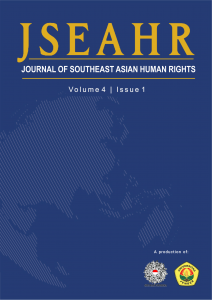
Our new article with Franklin De Vrieze on parliamentary monitoring of SDGs in South and Southeast Asia has appeared in the Journal of Southeast Asian Human Rights.
It is titled ‘Applying Post-Legislative Scrutiny to the Analysis of Legislation and SDGs in South and Southeast Asia’ and offers a regional follow-up on our previous article in The Journal of Legislative Studies.
Abstract
Post-Legislative Scrutiny (PLS) is an emerging oversight technique which is applied by parliaments to scrutinise implementation and impact of specific laws or legal frameworks. This article takes stock of PLS practices in countries in South and Southeast Asia and argues that PLS can also be used to scrutinise complex processes at the national or supra-national level, such as the implementation of the Sustainable Development Goals (SDGs). First, a wide introduction and the state of play in PLS is provided, with reference to different parliamentary and development approaches emerging from the application of PLS in parliaments worldwide, followed by two specific case studies: the law on microfinance in Myanmar and the law on social practice reform in Nepal. The examination of these case studies offers insights about the application of scrutiny techniques in different parliaments. The outcome of the analysis is used to respond to the main research question of this contribution: whether PLS techniques can be applied for the oversight of extended processes, as is the case with the implementation of SDGs. For this, details of the first world study on parliamentary oversight of SDGs are presented, with a regional focus on South and Southeast Asia. The results seem to support the authors’ claim that PLS as a technique can facilitate oversight both of specific legal provisions and complex multi-stakeholder processes, such as the monitoring of SDGs.
Citation (APA)
de Vrieze, F., & Fitsilis, F. (2020). Applying Post-Legislative Scrutiny to the Analysis of Legislation and SDGs in South and Southeast Asia. Journal Of Southeast Asian Human Rights, 4(1), 1-22. doi:10.19184/jseahr.v4i1.17611.
